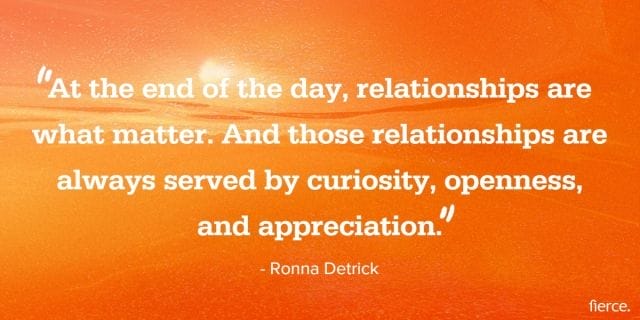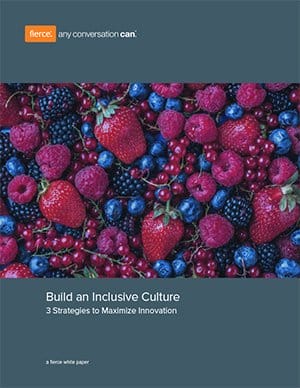
Millennials now make up more than half of the current workforce.
Sadly, despite this data, they bear a wave of criticism in the news, via social media and in the workplace. This uptick in critique can, at least in part, be explained by the simple reality that millennials (and generations even younger) are mixing and mingling with individuals from previous generations like never before.
This seems like it would be a good thing, yes? So what’s the problem?
Older generations are often stumped as to how to accommodate and deal with the supposed millennial mentality. Simultaneously, millennials feel frustrated, marginalized and unappreciated by their employers, even older co-workers who are seemingly stuck in their ways and less-than open to new ideas.
In her book, The Gaslighting of the Millennial Generation, Caitlin Fisher says, “Generations before us completely drove the bus into a lake and it’s somehow our fault everybody’s drowning…the millennial generation has been tasked with fixing the broken system we inherited and chastised for not doing it right or for daring to suggest improvements.”
Ouch!
Simon Sinek, in his viral video on the difficulty of managing millennials in the workplace, says that millennials are perceived as lazy and entitled. He stresses though, that their desire for meaningful work combined with their innovative mindset can be a genuine benefit.
He argues that the millennial mentality has been largely influenced by unfortunate environmental factors outside of their control — including poor leadership and failed parenting. He advises corporations to make structural changes that nurture rather than alienate the younger workforce.
I could not agree more.
I’ll admit that I’m a Baby Boomer. I was promoted into my current role as SVP of Learning for Fierce Conversation just after my boss (a Millenial) was promoted into hers.
I will also admit that I had my concerns. Not about her ability, but about mine! What will it be like to work for (and with) someone who is so much younger than me? Will I be able to keep up? Will my ideas or even style of leadership mesh with hers? How will I handle her direction or critique, given that she’s closer to the age of my daughters than my own?
I can gratefully report that I have learned and grown — in exponential and surprising ways — because of her. She sees the world (and the workplace) differently than me. She steps forward in ways I wouldn’t have dared when I was her age. She speaks with a level of certainty and self-belief that I have now but certainly did not a couple of decades ago. She is impressive, strong, creative, compassionate, and quite amazing. And I am better because of it, because of her.
Had either she or I held the mindset of “I’m right and she’s wrong” because we belong to different generations, none of this would have been possible. Instead, in working side-by-side, recognizing each other’s differences and strengths (and honoring such!), we have been able to create a partnership that is stronger, better, and far more comprehensive than would otherwise have been possible.
It’s a far better and wiser choice to work with rather than against the individuals in our work environment, regardless of age. The “one of us is right and the other is wrong” mentality doesn’t get us anywhere and certainly will not merit the positive results we’re trying to produce.
In short, no matter which generation you identify with, there are ways you can take the first step, step up, and improve (if not enjoy) effective working relationships between the generations of your employees:
1. Encourage harnessing creative vision.
In all endeavors, there is a gap between where current and future reality, between where we are now and where we want to go.
Millennials feel the impact of this gap in acute ways: they want to take action and have ideas as to how! Leverage this passion and creativity by training employees to invite their perspective. Teach them to start the conversations that allow younger generations to share their vision of the future and the ideas they have that will potentially change the course of organizational decisions.
2. Teach leadership to welcome ideas for improving company culture.
A desirable workplace culture boosts company reputation as well as recruiting and retention efforts. Because millennials tip the scales of our workforce population, their input is crucial to creating the kind of environment that attracts and retains their peers. Train your employees to take actionable steps to gather their ideas:
- Implement a suggestion box.
- Appoint a culture committee with millennial members.
- Hold company-wide meetings that allow open invitation to share ideas.
- Send out surveys or feedback forms prior to and following social company events.
Be curious. Be open. Be willing to learn.
3. Promote meeting the desire for instant gratification.
Wanting results now rather than later is often associated with a millennial mindset. What if that’s an asset, rather than a detriment? Encourage employees to leverage this way of thinking and being by delegating responsibilities that invite the younger generation to develop efficient processes.
The millennial “need for speed” can enable increased productivity, reduced spending, improved technology and faster results. Promote asking questions such as:
- What technology is available that we aren’t using that could potentially improve our process?
- Is there a way we could make a specific process faster or more efficient?
- What are some benchmark goals we can set for the very near future?
A note to those of you who aren’t a Baby Boomer like me: make your passion and creativity known! Don’t wait to be asked. Be proactive. Articulate your vision. Risk offering your solutions. 
It may not always be received or implemented, but your willingness to offer your perspective — and potential solutions — helps you develop and grow! And….we need you! Your ideas. Your brilliance. Your heart.
This is an amazing time: four distinct generations exist in the workplace simultaneously.
Every one of them — and every one of us — are best served by being curious about and focusing on strengths, benefits, and distinct gifts. We need to teach all employees to be aware of (and then let go of) blanket statements and beliefs that create division.
At the end of the day, relationships are what matter. And those relationships are always served by curiosity, openness, and appreciation.

ALIGN VALUES AND BEHAVIORS IN YOUR COMPANY
Start by building an inclusive workplace culture
Tags: #Cultural Change, #Generation Gap, #Uninspired




